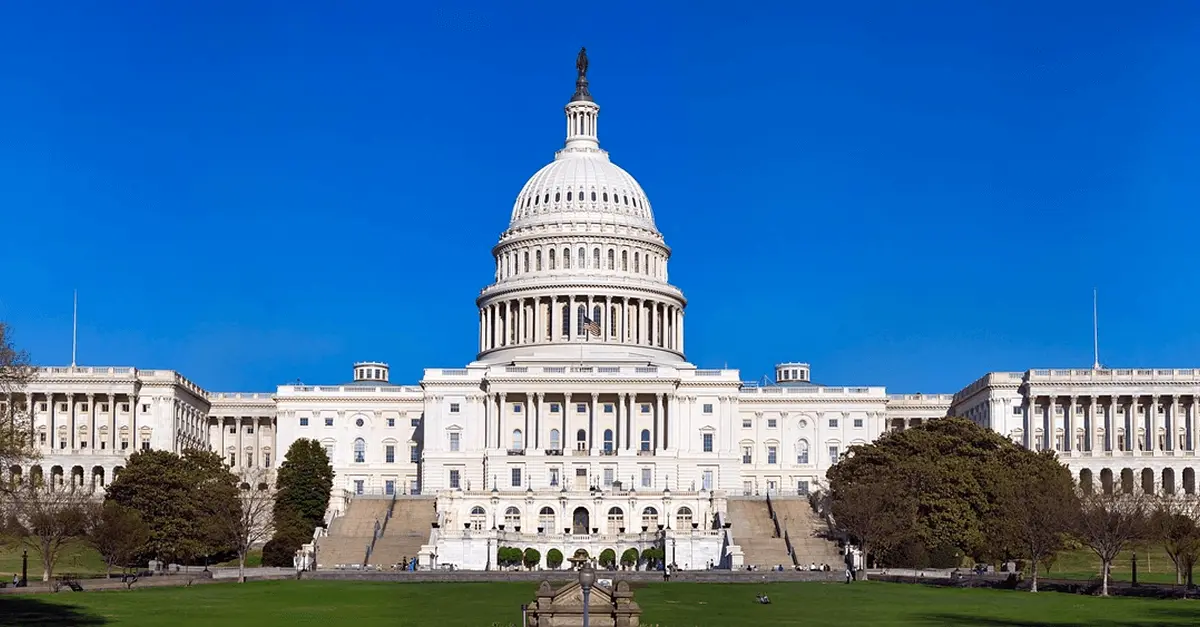UFLPA Compliance Is Really Hard: Here Are Your Options
To win releases following a UFLPA seizure, companies need a host of documentation that “proves the negative.”

Article Highlights:
- As the U.S. has vastly expanded its tariff program, CBP’s attention has shifted from ULFPA enforcement to the implementation of a significantly more complex tariff regime than in previous years.
- Goods that are suspected of coming from Xinjiang Province or are made with components from UFLPA-listed entities are subject to seizure. In order to get goods released following a seizure at the border, importers must “prove the negative” and show that their products were not made with forced labor.
- Screening suppliers for potential forced labor using supply chain risk management (SCRM) software tools is a great way to mitigate UFLPA risk. SCRM platform Z2Data can quickly identify dozens of potential risks in supply chains, helping companies to identify and rectify the presence of forced labor among direct and sub-tier suppliers.
Why Does UFLPA Compliance Still Matter in 2025?
Amidst extensive changes in the political, regulatory, trade and general supply chain landscape in 2025, the Uyghur Forced Labor Prevention Act (UFLPA) hasn’t garnered much attention this year. According to the Customs and Border Patrol’s (CBP) UFLPA dashboard, the value of seized shipments is exceptionally low in 2025, well below every other year of enforcement. Moreover, as the U.S. has vastly expanded its tariff program, CBP’s attention has turned to focus on enforcement of a significantly more complex tariff regime while utilizing the same number of staff. It’s safe to say that CPB has an extensive enforcement workload currently on its plate.
Despite these recent developments, the UFLPA, which became effective in the U.S. in 2022, remains a regulation that warrants significant compliance attention from importers. The most common penalty for noncompliance is the seizure of goods and eventual forfeiture, developments that can lead to unexpected manufacturing outages—along with the reputational risks associated with forced labor suspicion. Additionally, CBP can impose monetary penalties and businesses can lose import privileges for repeated violations. CBP is equipped with supply chain screening tools and can check if the manufacturer of imported goods is affiliated with companies accused of utilizing forced labor.
One other note is that the UFLPA actually operates under Section 307 of the Tariff Act of 1930, which prohibits the importation of goods made with forced labor. This means that companies have had a duty to screen for forced labor in their supply chains (and that their goods have been subject to seizure) long before the UFLPA took effect in 2022. In essence, all the UFLPA does is focus CBP attention on goods coming from Xinjiang Province and UFLPA-listed entities in China more broadly. It does not, however, change the fundamental law that goods cannot be imported into the U.S. if they were manufactured using forced labor.
Taken together, this means that the UFLPA and the forced labor screenings it imposes must be taken seriously as a compliance requirement, despite decreasing enforcement actions.
Updates to the UFLPA in 2025
Over the course of 2025, there have been several key developments in UFLPA enforcement to be aware of:
- 37 entities have been added to the UFLPA entity list in 2025, bringing the total number of listed companies to 144.
- New enforcement priorities have been added for CBP, including caustic soda, lithium, steel, copper, and Jujubes (red dates).
- Many US Congressional leaders have expressed concerns about Uyghur labor transfers from Xinjiang to other parts of China, a development documented in a May 2025 article in The New York Times. This could lead to an eventual expansion of the scope of UFLPA enforcement, as well as additional entries on the Entity List.
Though there’s no doubt that there’s significantly more awareness of the UFLPA and everything it entails compared with the regulation’s launch three years ago, many companies remain in the early stages of implementing UFLPA compliance programs. In doing so, they’re also discovering the depth of compliance and data requirements for the law for the first time.
How the UFLPA asks Companies to “Prove the Negative”
In technical terms, the UFLPA creates a “rebuttable presumption that all goods mined, produced or manufactured wholly or in part in the Xinjiang Uyghur Autonomous Region (XUAR) or any good made by an entity on the UFLPA entity list were made using forced labor and is barred from import into the U.S.” In simple terms, goods that are suspected of coming from Xinjiang Province or are made with components from UFLPA-listed entities are subject to seizure. In order to get goods released following a seizure at the border, importers must “prove the negative” and show that their products were not made with forced labor.
This scenario runs counter to a lot of conventional wisdom in the U.S. around judicial proceedings, where the burden of proof of an allegation is most often on the accusing party. In this customs seizure scenario, the burden of proof is placed on the importing party, and they must prove to the government that their goods were not made using forced labor.
While many U.S.-based companies have their suppliers complete attestations that they’re not using forced labor, such attestations serve little use in the case of a customs seizure. This is because customs expects to see detailed information about the labor conditions at the factory, including the following documentation and materials:
While many U.S.-based companies have their suppliers complete attestations that they’re not using forced labor, such attestations serve little use in the case of a customs seizure.
- Wage documents, including timecards or pay stubs.
- Bills of Material (BOM) for every component in the item(s) being imported
- Videos and transcripts of interviews of workers at foreign factories showing proof that the worker is not performing under duress
- Certificates of origin.
The exact documentation and evidence needed to get goods released may vary based on what is being imported. In all cases, though, the forms of evidence required to win a release are more difficult to obtain than common forced labor attestation.
How Can Companies Reduce Seizure Risks and Comply with the UFLPA?
In order to avoid a costly and potentially embarrassing goods seizure at a port of entry, companies have a variety of options at their disposal. They all, however, revolve around a common theme: conducting due diligence within your supply chain. Screening suppliers for potential forced labor risks using supply chain risk management (SCRM) software tools is a great start. SCRM platform Z2Data can quickly identify dozens of potential risks in supply chains. Companies can also collect BOMs for all the imported goods that go into their final products and screen several tiers deep into their supply chains.
Another direct, hands-on strategy importers can employ to decrease their risk of UFLPA noncompliance is on-site audits of suppliers. This shifts the burden of liability onto the suppliers in purchasing contracts. Ultimately, though, screening suppliers and crafting an ongoing risk management program for forced labor vulnerabilities is the best way to minimize the chances of a CBP seizure. In addition, the best approach to staying prepared to defend seized imports and win releases is by collecting and storing as much direct, primary-source supply chain documentation as possible.
In addition, the best approach to staying prepared to defend seized imports and win releases is by collecting and storing as much direct, primary-source supply chain documentation as possible.
Where Do Companies Struggle With UFLPA Compliance, and How Can They Achieve Success?
Put simply, companies struggle with UFLPA compliance because of the amount of effort required to “clear” suppliers in their supply chain of forced labor risks, collect BOMs from manufacturers, and organize the information in a way that’s actually useful. In many companies, there’s a limited team that must handle all compliance requirements for a range of regulations. These compliance teams can become quickly overwhelmed by the amount of follow-up required to eliminate every possible forced labor risk from a supply chain. While the effort required for risk detection and follow-up can be reduced using tools like Z2Data, companies still need to take it upon themselves to craft a risk tolerance plan, validate responses from suppliers, and issue corrective action requirements for risky suppliers.
In order to create an effective UFLPA program, it’s important to manage expectations around the capabilities of a small compliance team responsible for multiple regulatory programs. The best approach companies can take to managing their UFLPA workload is to set a clear risk tolerance threshold. This includes defining the following objectives:
- How many supply chain tiers it would like to screen
- How aggressively it wants to pursue potential risks
- How it can go about establishing expectations with suppliers to ensure no forced labor is in their supply chains.
A proper UFLPA compliance program doesn’t just focus on a single, static annual screening. Instead, it allows for supplier follow-ups and program flexibility as new risks are identified.
Is your company struggling to implement a UFLPA compliance plan? Are you having difficulties identifying the sub-tier suppliers that provide materials and parts to your direct suppliers? SCRM solution Z2Data can help businesses generate instant risk profiles across their entire supply chain and rapidly validate existing risks. A leading provider of supply chain relationship data, Z2Data can also be seamlessly integrated with Kharon software for additional insights. To learn more about Z2Data and how it can help your business detect and mitigate forced labor risks in your supply chain, schedule a free trial with one of our product experts.
The Z2Data Solution
Z2Data’s integrated platform is a holistic data-driven supply chain risk management solution, bringing data intelligence for your engineering, sourcing, supply chain and compliance management, ESG strategist, and business leadership. Enabling intelligent business decisions so you can make rapid strategic decisions to manage and mitigate supply chain risk in a volatile global marketplace and build resiliency and sustainability into your operational DNA.
Our proprietary technology augmented with human and artificial Intelligence (Ai) fuels essential data, impactful analytics, and market insight in a flexible platform with built-in collaboration tools that integrates into your workflow.


.svg)






